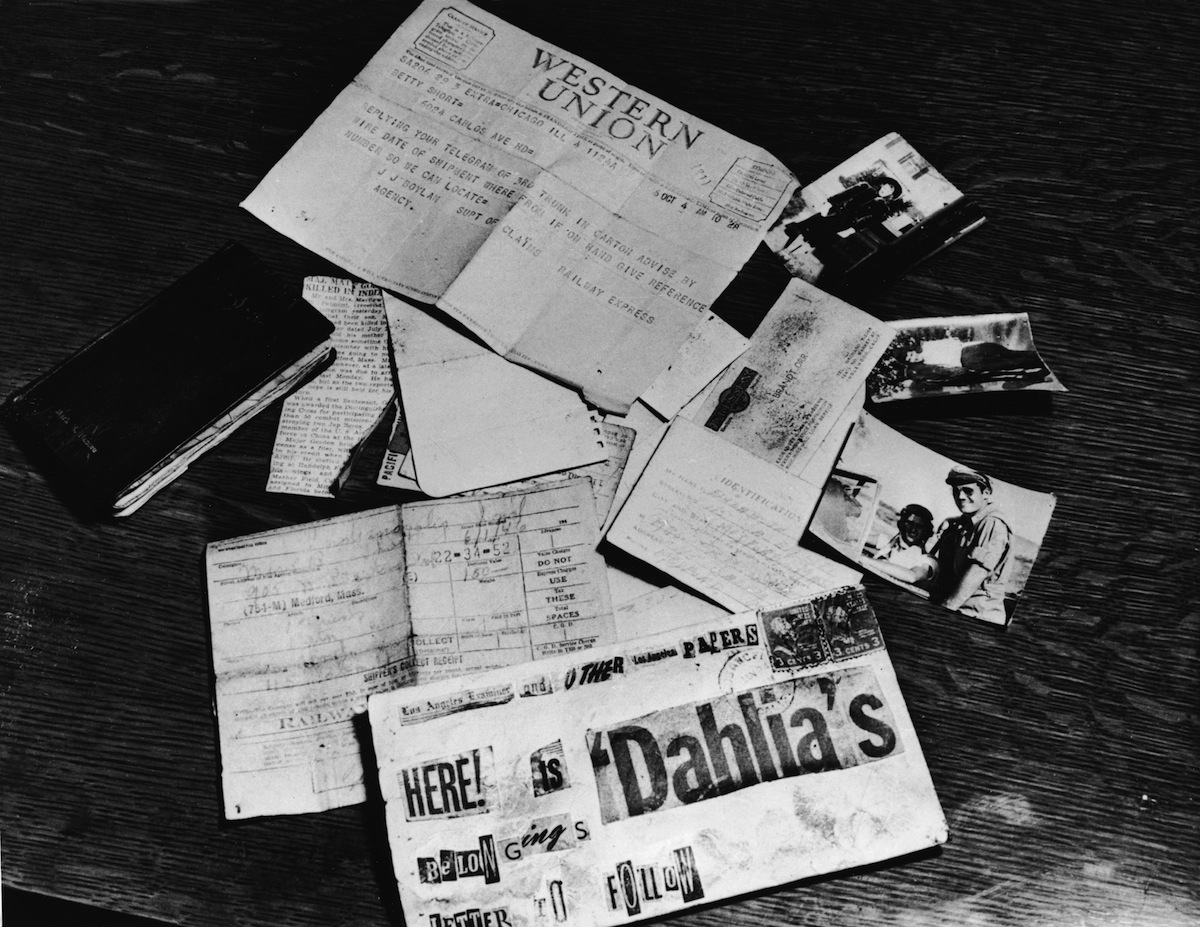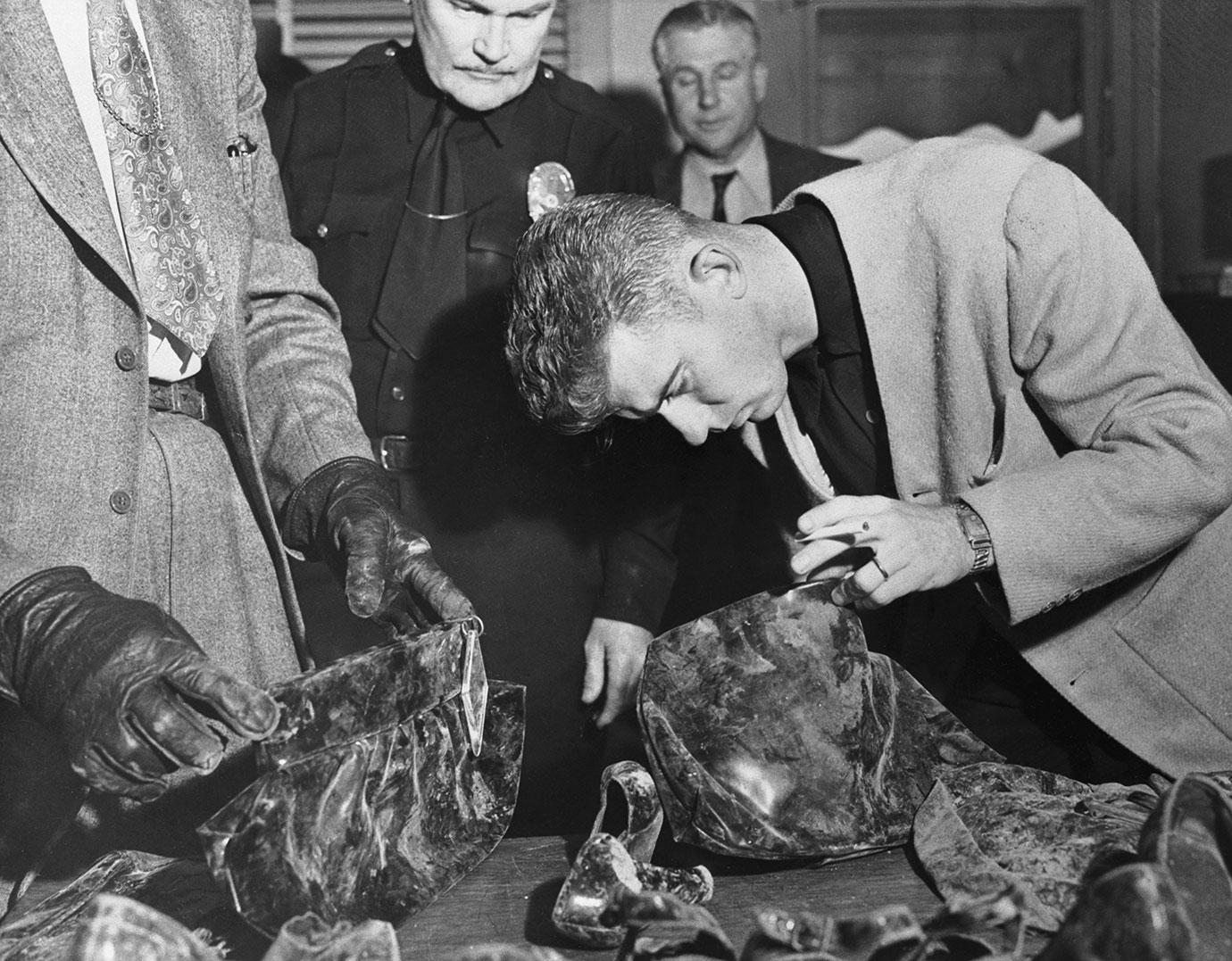The Black Dahlia murder is one of the most notorious unsolved crimes in American history, captivating the public's imagination for decades. The grisly details of the case, the mysterious circumstances surrounding it, and the lack of resolution have turned it into a chilling symbol of the darkest aspects of human nature. This case has not only fascinated true crime enthusiasts but also inspired countless books, films, and theories.
The murder of Elizabeth Short, also known as the Black Dahlia, took place on January 15, 1947, in Los Angeles, California. Her body was found in a vacant lot, brutally mutilated and divided into two parts, with a haunting smile carved into her face. The crime scene was a macabre tableau that shocked the nation and left investigators baffled. The case remains open to this day, with no arrests made despite numerous leads and suspects.
As we delve deeper into the Black Dahlia murder crime scene, we will explore the events leading up to the crime, the investigation process, the key players involved, and the lasting impact this case has had on society. This article aims to provide a comprehensive understanding of the case while adhering to the principles of expertise, authoritativeness, and trustworthiness (E-A-T), ensuring that the information presented is credible and valuable.
Read also:Cast From Boardwalk Empire A Deep Dive Into The Iconic Series
Table of Contents
- Biography of Elizabeth Short
- Crime Scene Details
- Investigation Process
- Key Suspects
- Media Coverage
- Forensic Evidence
- Psychological Profile of the Killer
- Historical Context of the Black Dahlia Murder
- Cultural Impact
- Conclusion
Biography of Elizabeth Short
Early Life and Background
Elizabeth Short, born on July 29, 1924, in Boston, Massachusetts, was the third of five daughters in her family. Known for her striking beauty and enigmatic personality, Short's life was marked by frequent relocations and a troubled upbringing. Her father abandoned the family when she was a child, which deeply affected her emotional well-being and shaped her future relationships.
Personal Data
| Full Name | Elizabeth Short |
|---|---|
| Nickname | Black Dahlia |
| Date of Birth | July 29, 1924 |
| Place of Birth | Boston, Massachusetts |
| Date of Death | January 15, 1947 |
| Place of Death | Los Angeles, California |
Crime Scene Details
The discovery of Elizabeth Short's body on January 15, 1947, sent shockwaves through Los Angeles. Her remains were found in a vacant lot at the corner of South Norton Avenue and West 39th Street. The body was meticulously posed, with her torso and legs separated at the waist, and a ghastly smile carved from ear to ear. This grim tableau became the defining image of the Black Dahlia murder crime scene.
- Short's body was completely drained of blood, suggesting the killer had knowledge of medical or surgical procedures.
- She was found naked, with her clothing neatly folded nearby, indicating a deliberate and calculated act.
- The crime scene was photographed extensively, and these images have since become iconic representations of the case.
Investigation Process
The investigation into the Black Dahlia murder was extensive but ultimately inconclusive. The Los Angeles Police Department (LAPD) conducted one of the largest manhunts in its history, interviewing hundreds of potential suspects and following countless leads. Despite their efforts, the case remains unsolved.
Challenges Faced by Investigators
Several factors complicated the investigation:
- Limited forensic technology at the time made it difficult to analyze evidence effectively.
- Public interest and media coverage created pressure on law enforcement, leading to leaks and misinformation.
- Short's transient lifestyle and numerous aliases made it challenging to piece together her final days.
Key Suspects
Over the years, numerous individuals have been named as potential suspects in the Black Dahlia murder. While none were conclusively linked to the crime, some names stand out due to their proximity to the victim or the nature of their interactions:
- Walter Bayley: A physician who had a known relationship with Short. He was cleared after an intense investigation.
- George Hodel: A prominent figure in Los Angeles society, Hodel became a suspect due to his alleged involvement in Satanic rituals. His case was revisited in the 2000s but lacked concrete evidence.
- Mark Hansen: An entrepreneur who owned the influential Hollywood nightspot, The Flamingo Club. His connections to Short and his behavior during the investigation raised suspicions.
Media Coverage
The Black Dahlia murder garnered extensive media attention, with newspapers and magazines devoting significant coverage to the case. The sensationalist nature of the reporting both helped and hindered the investigation, as it brought public awareness but also led to misinformation.
Read also:Chadwick Boseman Wife Pregnant A Heartfelt Look Into The Legacy And Personal Life
Impact on Public Perception
The media portrayal of Elizabeth Short as the "Black Dahlia" transformed her into a tragic icon. Her nickname, inspired by a film noir movie of the time, "The Blue Dahlia," added to the mystique surrounding her death. This media frenzy contributed to the enduring fascination with the case.
Forensic Evidence
Although forensic science was in its infancy during the 1940s, investigators collected various pieces of evidence from the crime scene. These included:
- Fingerprints and handwriting samples from letters allegedly sent by the killer.
- Soil samples from the vacant lot where the body was found, which were analyzed to determine if they matched any known locations.
- Photographic documentation of the crime scene, which remains a crucial part of the case file.
Psychological Profile of the Killer
Experts have attempted to construct a psychological profile of the Black Dahlia killer based on the nature of the crime. Characteristics often attributed to the perpetrator include:
- A high level of intelligence and organization, as evidenced by the meticulous preparation of the crime scene.
- A possible background in medical or surgical fields, given the precision of the mutilations.
- A deep-seated hatred or obsession with the victim, suggesting a personal connection.
Historical Context of the Black Dahlia Murder
The Black Dahlia murder occurred during a period of significant social and cultural change in post-war America. The 1940s were marked by economic prosperity, increased urbanization, and a growing fascination with celebrity culture. These factors contributed to the widespread attention the case received and its lasting legacy.
Social Implications
The murder highlighted the vulnerabilities faced by women in urban environments and sparked discussions about safety and crime prevention. It also underscored the need for advancements in forensic science and investigative techniques.
Cultural Impact
The Black Dahlia murder has left an indelible mark on popular culture, inspiring countless works of art, literature, and film. Books such as "The Black Dahlia" by James Ellroy and films like "The Black Dahlia" (2006) have kept the memory of Elizabeth Short alive, ensuring that her story continues to resonate with new generations.
Legacy in True Crime
As one of the most infamous unsolved cases in history, the Black Dahlia murder remains a touchstone for true crime enthusiasts and investigators alike. It serves as a reminder of the complexities and challenges inherent in solving such crimes and the importance of justice for victims and their families.
Conclusion
The Black Dahlia murder crime scene remains one of the most haunting and perplexing cases in modern history. From the grisly details of the crime to the exhaustive investigation and the enduring cultural impact, this case continues to captivate and confound. While justice for Elizabeth Short may never be achieved, the pursuit of truth and understanding persists.
We invite you to share your thoughts and theories in the comments below. For more in-depth explorations of true crime, be sure to explore other articles on our site. Together, we can continue the conversation and honor the memory of those whose stories demand to be told.


